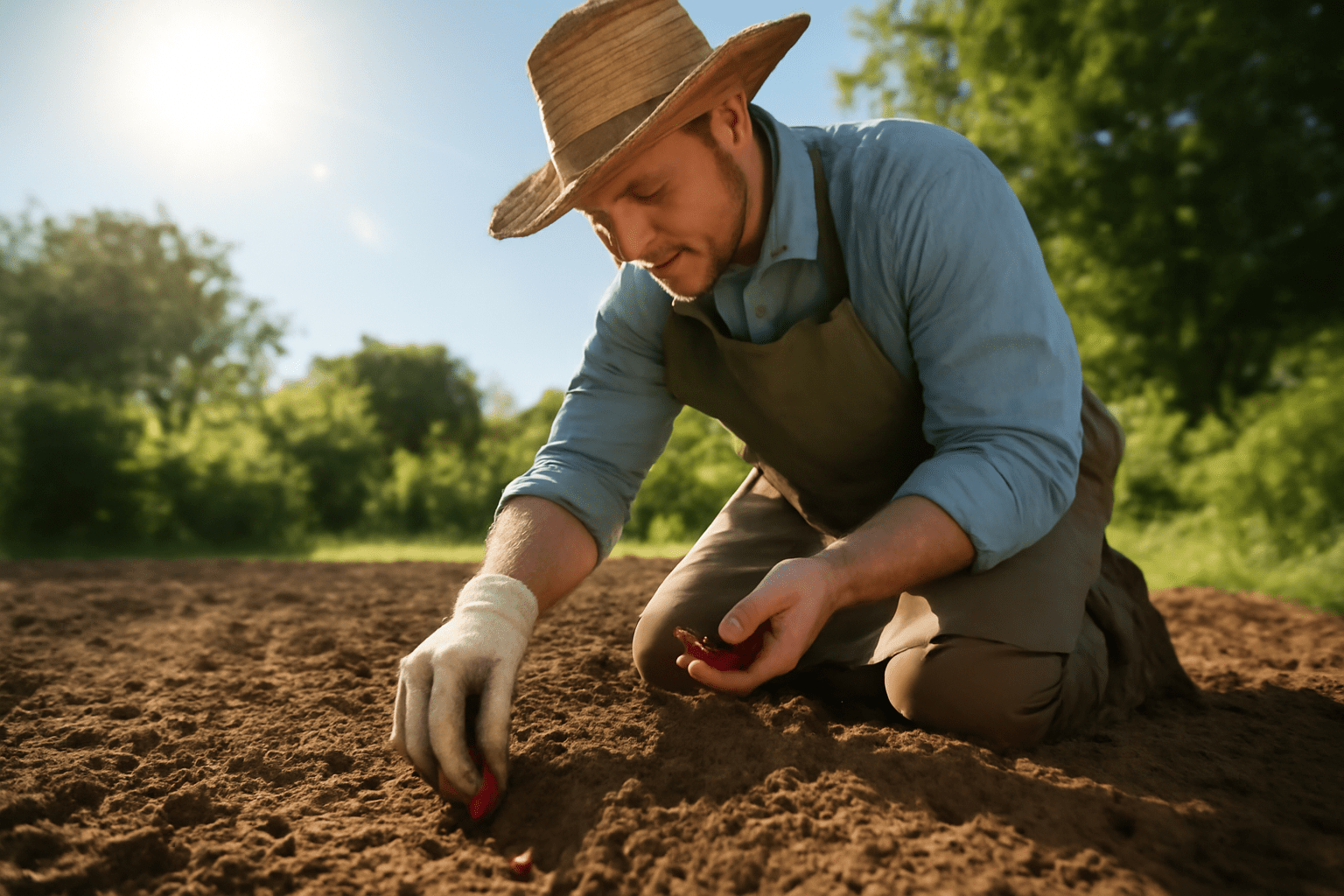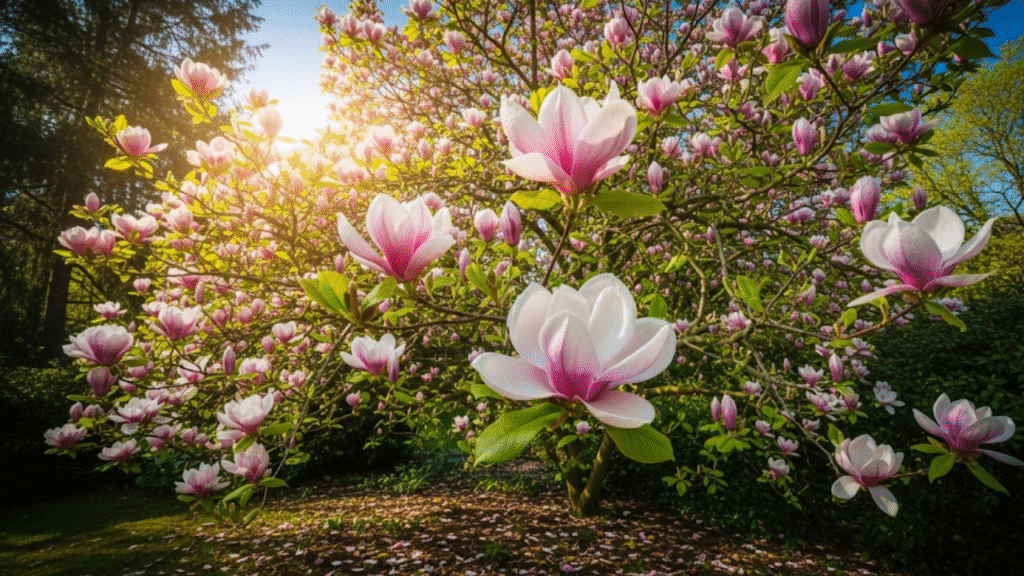
How to Plant and Grow Magnolia Tree Seeds: A Step-by-Step Guide for Success
Magnolia trees are a breathtaking addition to any garden, with their large, fragrant blooms and glossy leaves that offer beauty year-round. But growing these stunning trees from magnolia tree seeds can feel like an overwhelming challenge. If you’ve tried planting magnolia seeds before, you might have faced slow growth, poor germination, or even complete failure. 😔
You’re not alone—many aspiring gardeners struggle with successfully growing magnolias from seed. But don’t worry! In this step-by-step guide, we’ll walk you through everything you need to know to plant and nurture magnolia tree seeds with confidence. From choosing the right location and preparing the seeds to caring for your seedlings, we’ve got you covered. 🌱
By the end of this guide, you’ll be ready to give your magnolia seeds the best start and watch them flourish into the magnificent trees you’ve always dreamed of. Keep reading, and let’s turn your gardening goals into reality! 🌸
Table of Contents
Toggle🌸 Understanding Magnolia Trees and Their Seeds 🌸
Magnolia trees are known for their spectacular flowers and unique fragrance, making them a favorite among gardeners. But before you dive into planting magnolia tree seeds, it’s important to understand what makes these trees and their seeds so special. 🌳
🌱 Why Magnolia Trees Are Worth the Effort 🌱
Magnolia trees are beloved for their large, beautiful blossoms that can range from white to deep pink or purple, depending on the variety. 🌸 They’re also hardy and adaptable, growing well in various climates and adding a touch of elegance to any landscape. 🌼 Whether you’re looking to enhance your garden or enjoy their sweet fragrance in the spring, growing a magnolia tree from seed can be a rewarding experience!
However, magnolias take time to grow—sometimes up to 10 years or more to reach full maturity. But with patience and the right care, you’ll be rewarded with a tree that’s as stunning as it is lasting. 🌳
🌿 What Are Magnolia Tree Seeds? 🌿
Magnolia seeds are housed inside cone-like fruit structures that form after the flowers have bloomed. 🌺 These seeds are often dark red or brown and look quite different from the typical seeds you might be used to. Unlike many other trees, magnolias don’t always sprout easily from seed. They require a special treatment called cold stratification to break their dormancy before they can successfully germinate. 🧊
This means magnolia seeds need a “winter chill” to trigger the sprouting process. But don’t worry—we’ll cover exactly how to handle this step later in the guide! 😉
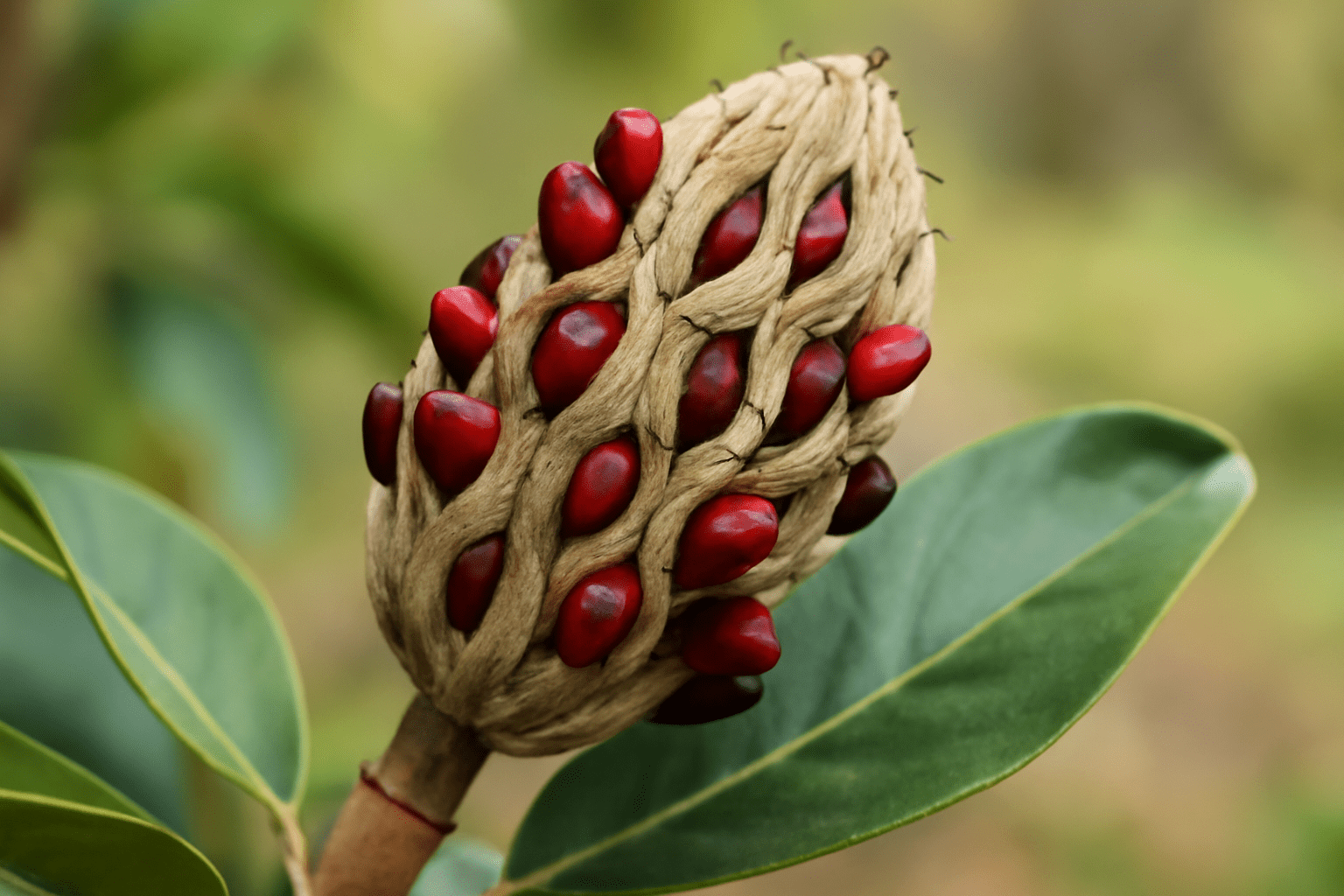
🌞 The Importance of Seed Collection Timing 🌞
Timing is crucial when collecting magnolia tree seeds. ⏳ You’ll need to wait until the seed pods mature and begin to split open, usually in late fall or early winter. At this point, the seeds inside are fully developed and ready to be harvested. If you collect them too early, they may not be viable, so patience is key! ⏳
In short, understanding magnolia trees and their seeds helps you set realistic expectations and prepares you for the journey ahead. With the right knowledge and care, you can successfully grow these magnificent trees from seed and watch them thrive. 🌳
🌳 When and Where to Plant Magnolia Tree Seeds 🌳
Choosing the right time and place to plant your magnolia tree seeds is crucial for giving them the best chance of success. Here’s how to get it just right! 😊
⏰ Best Time to Plant Magnolia Seeds ⏰
The timing of planting your magnolia seeds plays a big role in how well they’ll germinate. The ideal time to plant is in late fall to early spring. Here’s why:
- Late Fall (October-November): When you plant in the fall, the seeds naturally experience the cold winter conditions they need to break dormancy. This mimics the environment they would experience in the wild. ❄️
- Early Spring (March-April): If you miss the fall window, early spring is your next best option. You’ll want to make sure the soil isn’t frozen, and temperatures are still cool enough to encourage seed growth. 🌱
It’s important to note that magnolia tree seeds need a cold period to germinate, which is why the timing matters so much. If you plant too early when temperatures are warm, your seeds might not sprout. 🌞
🌞 Where to Plant Magnolia Seeds 🌞
Magnolia trees love full sunlight and well-drained soil, so pick a spot that can provide both. Here’s what to look for:
- Sunlight: Magnolias need at least 6 hours of direct sunlight each day to grow strong and healthy. Find a sunny spot, ideally where they won’t be shaded by nearby trees or buildings. 🌞
- Soil: Magnolia trees prefer slightly acidic, well-drained soil. Avoid planting in heavy, clay-like soil, as it can trap too much moisture and suffocate the roots. A light, loamy mix is perfect! 🌱
- Space: Keep in mind that magnolias are large trees. Make sure there’s plenty of room for them to grow without interference from buildings, fences, or other plants. 🌳
🌍 Climate Considerations 🌍
Magnolias thrive in temperate climates, so check your hardiness zone before planting. Most magnolias do well in USDA zones 4-9. If you live in an area with harsh winters or extremely hot summers, it might be best to opt for a hardier variety of magnolia. 🌡️
Planting your magnolia tree seeds in the right place, at the right time, will give them the best chance of thriving and growing into the magnificent trees they’re destined to be. 🌸
Now that you know when and where to plant, let’s dive into preparing those seeds for their big journey! 🌱
🌱 Preparing Magnolia Tree Seeds for Planting 🌱
Successfully growing magnolia tree seeds starts long before they go into the soil. The key to healthy, thriving magnolia trees lies in how you prepare the seeds. Let’s break it down into easy steps so you can start your planting journey with confidence! 🌿
🌼 1. Harvesting Magnolia Seeds 🌼
To get the best results, you need to gather magnolia tree seeds at the right time. Wait until the seed pods mature and begin to open—this usually happens in late fall. The seeds inside the pods should be plump and dark brown. 🍂
Tip: Pick the pods after they’ve naturally started to open. This ensures the seeds are ready for planting. 🌿
Once you’ve collected the pods, gently break them open and extract the seeds. You’ll find that they have a fleshy covering—this should be removed to prevent mold and ensure better germination. 🧹
❄️ 2. Stratifying Your Seeds (Cold Treatment) ❄️
Magnolia seeds don’t just need warmth to sprout—they actually require a cold period to break dormancy and kickstart the germination process. This step is called stratification. Here’s how to do it:
- Soak the Seeds: Start by soaking the seeds in water for 24 hours. This helps soften the seed coat and speeds up the process. 💧
- Refrigerate the Seeds: After soaking, place the seeds in a plastic bag with a little damp sphagnum moss or sand. Keep them in the fridge for about 30 to 60 days. ❄️
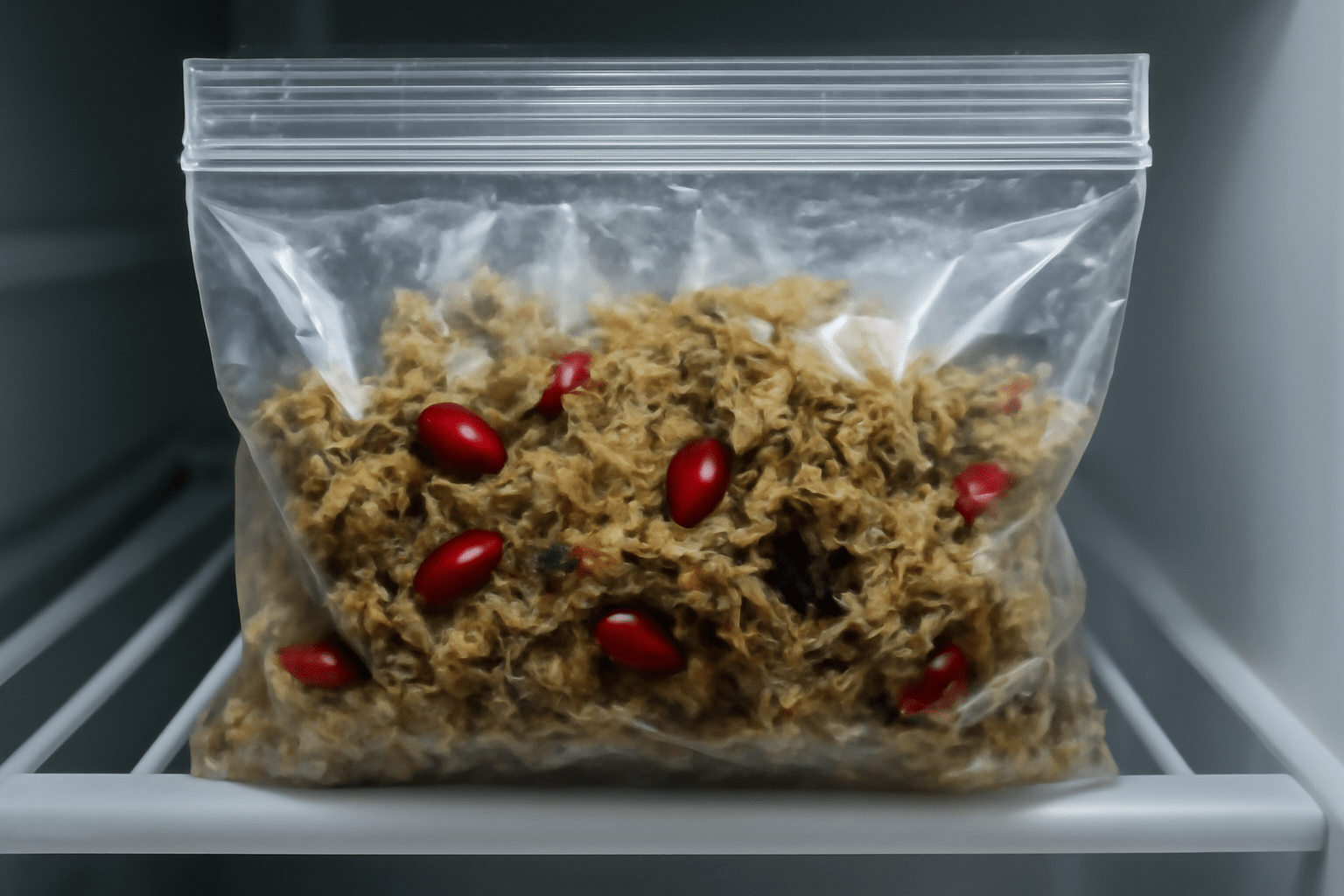
Why Stratification? The cold treatment mimics winter conditions, which triggers the seeds to prepare for spring growth. Without it, your magnolia seeds may not sprout at all! ❄️🌱
🌞 3. Ready to Plant? 🌞
Once your magnolia tree seeds have been cold-stratified, they’re ready for planting! Whether you’re starting them in containers or directly in the ground, they’ll have the best chance of success after this preparation. 🌿🌷
Tip: Be patient—magnolia seeds can take time to germinate, sometimes up to 6 weeks. So, don’t get discouraged if they don’t sprout immediately! 🌱
Now, you’re all set to plant your magnolia tree seeds and watch your trees begin their journey to greatness! 🎉🌳
🌱🌼 Planting Magnolia Tree Seeds 🌼🌱
Now that you’ve properly prepared your magnolia tree seeds, it’s time to get them into the soil! Whether you decide to plant them in containers or directly in the ground, we’ll walk you through the steps to ensure your seeds have the best start possible. Let’s dive in! 🌿🌞
🪴 Container Planting: A Great Option for Beginners 🪴
Planting your magnolia tree seeds in containers is a great choice if you’re just starting out. It allows for better control over the environment and gives you a chance to monitor your seeds closely. Follow these simple steps:
- Choose a Container: Select a pot or container that’s at least 6 inches deep with drainage holes. Magnolias need space to grow, so a slightly larger container will give the roots room to spread. 🏺
- Prepare the Soil: Use a well-draining potting mix. Adding a little perlite or sand helps with drainage. This ensures the seeds don’t become waterlogged, which could cause them to rot. 🌿
- Plant the Seeds: Place the magnolia tree seeds about 1/2 inch deep into the soil. Be sure to space them out so they have room to grow without competing for resources. 🌱
- Water Gently: After planting, water lightly, keeping the soil moist, but not soggy. Magnolias like consistent moisture, but they don’t do well in overly wet conditions. 💧
- Place in a Sunny Spot: Put the container in a location with plenty of natural light or use grow lights if you’re starting indoors. A sunny windowsill works wonders! 🌞
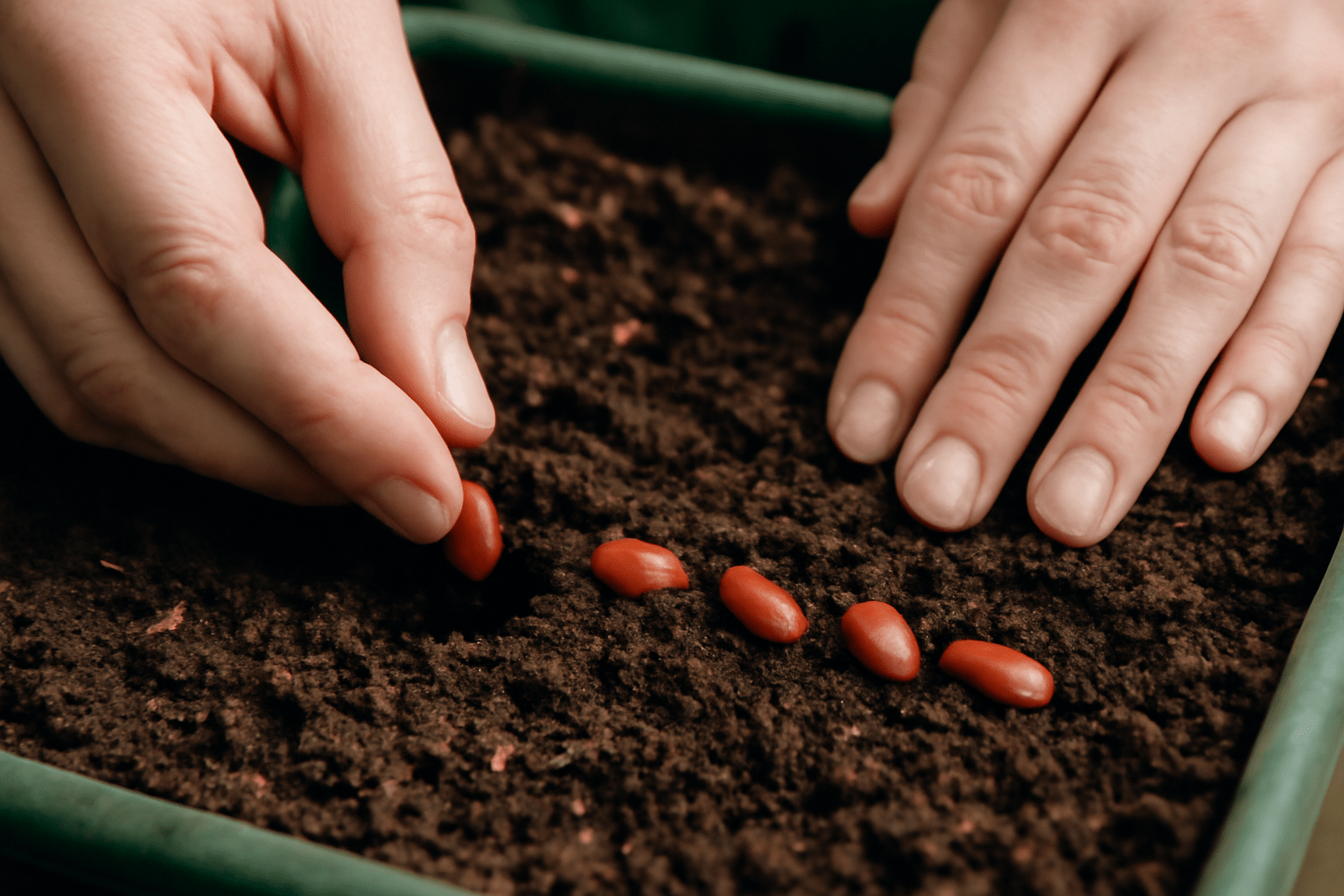
🌿 Direct Planting in the Ground: When You’re Ready for Outdoors 🌿
If you’re ready to plant your magnolia seeds directly in the garden, here’s how to set them up for success:
- Choose the Right Location: Pick a spot with full sunlight and well-drained soil. Magnolia trees thrive in well-lit areas with room to grow. 🌞
- Prepare the Soil: Loosen the soil and remove any weeds or rocks. You can mix in compost or organic matter to improve soil quality and drainage. 🌾
- Plant the Seeds: Create small holes or furrows about 1/2 inch deep. Space the seeds at least 2-3 inches apart to give them enough room to grow. 🌱
- Water the Seeds: Water the soil gently after planting to ensure good seed-to-soil contact. Keep the soil moist, especially during the germination period, but avoid overwatering. 💧
- Cover with Mulch: Adding a light layer of mulch will help keep the moisture in and protect the seeds from temperature fluctuations. 🌾
💧 Extra Tips for Successful Planting 💧
- Be Patient: Germination can take time—sometimes up to 3-4 weeks. Make sure the soil stays moist and avoid disturbing the seeds while waiting for them to sprout. ⏳
- Keep the Temperature Right: Magnolia seeds prefer temperatures between 60-70°F (15-21°C) for optimal germination. Ensure the environment isn’t too hot or too cold. 🌡️
- Handle with Care: Be gentle with your seeds and soil to avoid disturbing them too much. Light, careful handling will give you the best chance of success. 🌱
By following these steps, you’re well on your way to growing strong, healthy magnolia trees from seed! 🌳 Whether you’re starting indoors or planting directly outside, providing the right conditions for your magnolia tree seeds will ensure a fruitful and successful growing experience. 🌸 Keep going, and soon you’ll see those gorgeous magnolia blooms! 🌷
🌱 Caring for Magnolia Seedlings 🌱
Once your magnolia tree seeds have germinated and sprouted into little seedlings, it’s time to give them the care they need to grow strong and healthy. This phase is crucial for ensuring your magnolias thrive long-term. Here’s how to nurture your seedlings with the right amount of attention. 😊
💧 Watering Your Seedlings: The Right Balance 💧
Watering is one of the most important aspects of caring for magnolia seedlings. 🌿
- Consistent moisture: Keep the soil consistently moist but not waterlogged. Overwatering can lead to root rot, while underwatering can dry out your seedlings. 💦
- Water gently: Use a watering can with a fine spout or a spray bottle to avoid disturbing the delicate seedlings. 🌸
- Check soil moisture: Before watering, poke your finger into the soil. If it feels dry a couple of inches down, it’s time to water. 🌱
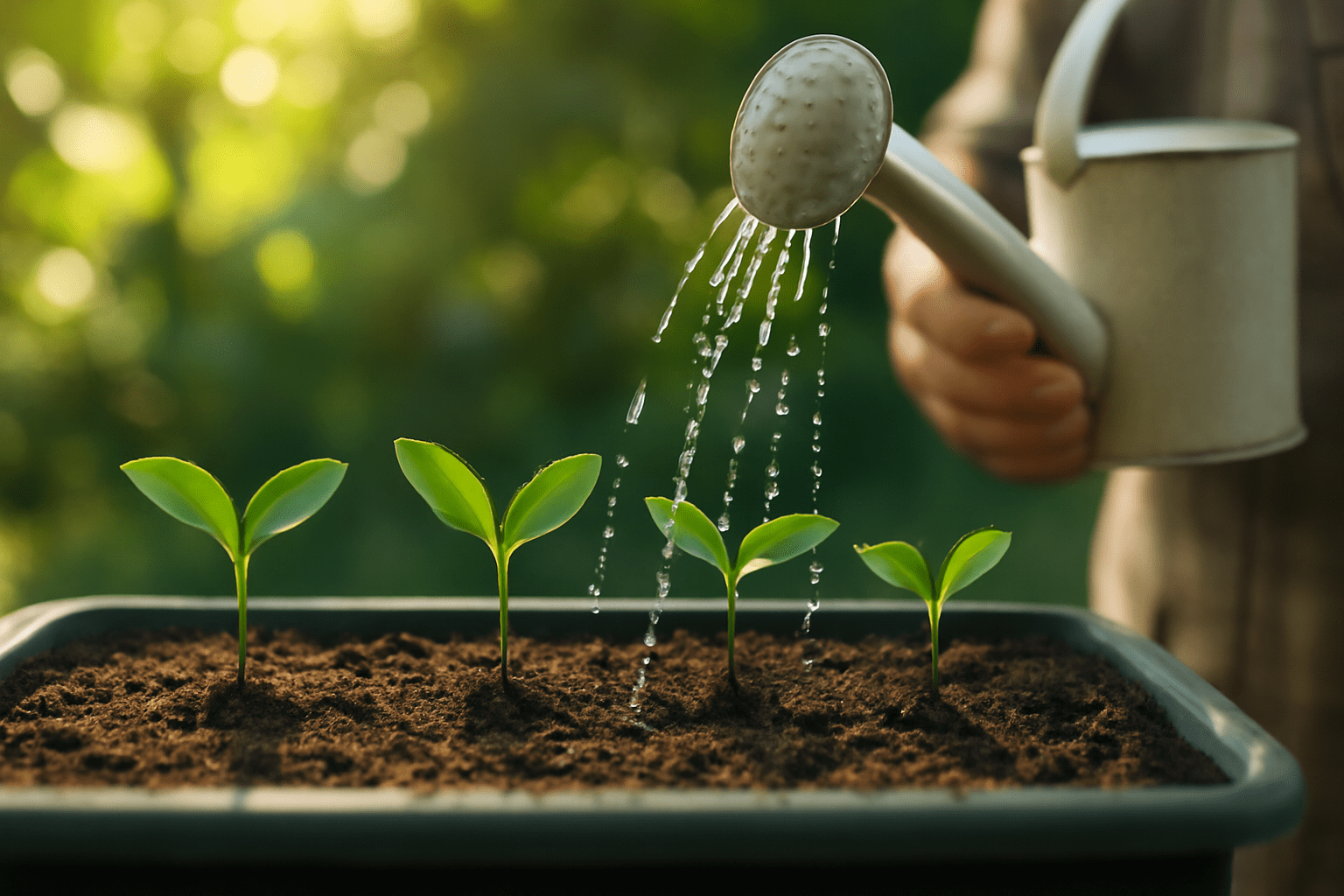
☀️ Providing the Right Light ☀️
Magnolia seedlings need plenty of light to grow strong.
- Bright, indirect sunlight: Place your seedlings in a location that gets bright but indirect sunlight. Too much direct sun can scorch their leaves. 🌞
- Grow lights for indoor seedlings: If you’re growing your magnolias indoors, consider using grow lights to provide the necessary light, especially during the winter months when natural sunlight is limited. 💡
🌱 Fertilizing Your Seedlings 🌱
Magnolia seedlings are relatively low-maintenance when it comes to fertilization, but a little boost can help them grow faster.
- Wait until established: Don’t fertilize immediately after germination. Wait until your seedlings have at least two or three sets of leaves before applying any fertilizer. 🌿
- Choose the right fertilizer: Use a balanced, slow-release fertilizer with equal parts nitrogen, phosphorus, and potassium (NPK). This will encourage strong root and leaf development without overfeeding. 🌳
🐞 Protecting Your Seedlings from Pests and Diseases 🐞
While magnolia seedlings are relatively hardy, they can still fall victim to pests and diseases. Keeping an eye on them can help prevent problems before they start.
- Common pests: Look out for aphids, slugs, and caterpillars. These pests can damage your seedlings by sucking sap or eating the leaves. 🦋
- Solution: Use an organic insecticidal soap or simply hand-pick pests off your seedlings. 🧴
- Preventing diseases: Magnolia seedlings can be susceptible to fungal infections, particularly when the soil is too moist. 🌾
- Solution: Ensure your pots have good drainage and avoid overwatering. If you notice signs of mold or mildew, trim affected areas immediately and increase airflow around the plants. 🍃
🌾 Transplanting Your Seedlings: When and How 🌾
When your magnolia seedlings have grown strong and have a few sets of leaves, it’s time to think about transplanting them into larger pots or outdoors.
- When to transplant: Wait until the seedlings are at least 6-8 inches tall and have multiple sets of leaves. This will give them the best chance of adapting to their new environment. 🌱
- Hardening off: Before transplanting them outdoors, gradually expose your seedlings to outdoor conditions. This process, called hardening off, helps them adjust to changes in temperature, light, and wind. Start by placing them outside for a couple of hours a day, increasing the time each day until they are ready for full-time outdoor life. 🌞
🌸 Final Tips for Healthy Seedlings 🌸
- Avoid crowding: Don’t overcrowd your seedlings, as this can cause them to compete for light, water, and nutrients. 🌿
- Be patient: Magnolias grow slowly, so be patient. With the right care, your seedlings will become strong, mature trees in time. 🌳
By following these simple yet effective care steps, you’ll give your magnolia tree seeds the best chance to thrive and grow into the beautiful, flowering trees you envision! 🌷🌳
🌳 Transplanting and Growing Your Magnolia Tree 🌸
After months of nurturing your magnolia tree seeds, it’s finally time to give your young seedlings the space they need to grow into strong, healthy trees. Transplanting them into the ground or larger pots is an exciting milestone, but it’s crucial to do it right for the best chance of success. Let’s walk through the process step by step! 😊
🌱 When to Transplant Your Magnolia Seedlings 🌱
Knowing when to transplant is key. You want to wait until your seedlings have developed at least 2-3 sets of leaves. This ensures they’re strong enough to handle the transition and thrive in their new environment. 🪴
- Wait for warm weather: Transplanting during spring or early summer gives your magnolia tree the best chance to establish roots before colder months arrive. 🌞
- Hardening off: Gradually expose your seedlings to outdoor conditions for about a week. Start with a few hours outside each day and slowly increase the exposure time to avoid shock. 🌿
🌳 How to Transplant Magnolia Seedlings 🌳
Now that your seedlings are ready for their new home, here’s how to transplant them with care:
- Choose the right location: Pick a sunny spot with well-drained soil. Magnolias need full sunlight to thrive, so avoid shaded or damp areas. 🌞
- Prepare the soil: Dig a hole that’s twice as wide as the seedling’s root ball. The hole should be deep enough to allow the roots to spread out comfortably. 🌱
- Handle the seedling gently: When removing the seedling from the pot, be careful not to disturb the roots too much. A gentle tug or loosening around the edges will do. 🤲
- Place in the hole: Set the seedling in the hole at the same depth it was growing in the pot. Fill the hole with soil, pressing it lightly to remove air pockets. 🌍
- Water generously: After transplanting, give your magnolia tree a good drink of water. This helps settle the soil around the roots. 💧

🌼 Caring for Your Transplanted Magnolia 🌼
Once your magnolia tree is in the ground or its new pot, it will need extra attention to settle in.
- Watering: Keep the soil moist but not waterlogged. Regular watering is important during the first few months as your tree establishes its roots. 💦
- Mulching: Apply a layer of mulch around the base to retain moisture and keep the soil cool during hot months. This also helps prevent weeds from competing for nutrients. 🌾
- Fertilizing: Wait until your magnolia has been in the ground for at least a few months before fertilizing. Use a slow-release, balanced fertilizer to support growth. 🌱
- Protection from the elements: If you’re in a region with strong winds or extreme heat, consider placing a protective barrier around your young tree or providing some shade during particularly hot spells. 🌞
🌿 Long-Term Growth and Maintenance 🌿
As your magnolia tree matures, it will require less frequent care, but there are a few ongoing tasks to keep it healthy:
- Pruning: Light pruning is recommended to remove any dead or damaged branches, but magnolias don’t require heavy pruning. This helps maintain its shape and encourages healthier growth. ✂️
- Pest control: Keep an eye out for pests like aphids or scales. If you notice any, treat with organic insecticidal soap to protect your tree. 🐞
- Patience: Magnolias are slow growers, but with consistent care, you’ll be rewarded with beautiful blooms in a few years! 🌸
By following these steps, your magnolia tree seedlings will thrive and grow into magnificent trees that will add beauty to your garden for years to come! 🌿😊
🐛🌱 Troubleshooting Common Magnolia Growing Problems 🌱🐛
Growing magnolia trees from seed can sometimes come with a few bumps along the way. Don’t worry—these issues are normal and can usually be fixed with some simple tweaks! Here are some common problems you might encounter and how to solve them: 😊
🟡 Problem 1: Magnolia Seeds Not Germinating 🌱
One of the most common frustrations is when magnolia tree seeds don’t sprout. If you’ve followed the right steps but still see no growth, it could be due to a few reasons:
Solution:
- Cold Stratification: Magnolia seeds need a period of cold dormancy to germinate properly. If you skipped the cold stratification or didn’t leave them in the fridge long enough (30-60 days), the seeds might not sprout. Make sure to soak your seeds for 24 hours before refrigeration and wait long enough for them to break dormancy. 🧊
- Planting Depth: Planting seeds too deep can prevent them from sprouting. Ensure you plant them only about 1/2 inch deep in moist, well-draining soil. 🌱
- Temperature: If your environment is too warm, magnolia seeds may struggle. Keep them in a cool spot with indirect sunlight while they germinate. 🌞
🟠 Problem 2: Yellowing Leaves 🍂
Yellowing leaves on your magnolia seedlings can be a sign of nutrient imbalance or improper watering. Here’s how to fix it:
Solution:
- Watering Issues: Both overwatering and underwatering can cause yellow leaves. Ensure your seedlings are kept in well-draining soil and water them only when the top inch of soil is dry. Avoid letting the seedlings sit in soggy soil. 💧
- Nutrient Deficiency: If your magnolia seedlings are yellowing, they might need a nutrient boost. Start using a balanced, slow-release fertilizer once they are a few months old. This will provide essential nutrients without overwhelming young roots. 🌿
- Sunlight: Make sure your magnolias get plenty of light. If the seedlings aren’t receiving enough sunlight, they may show signs of stress, including yellowing leaves. 🌞
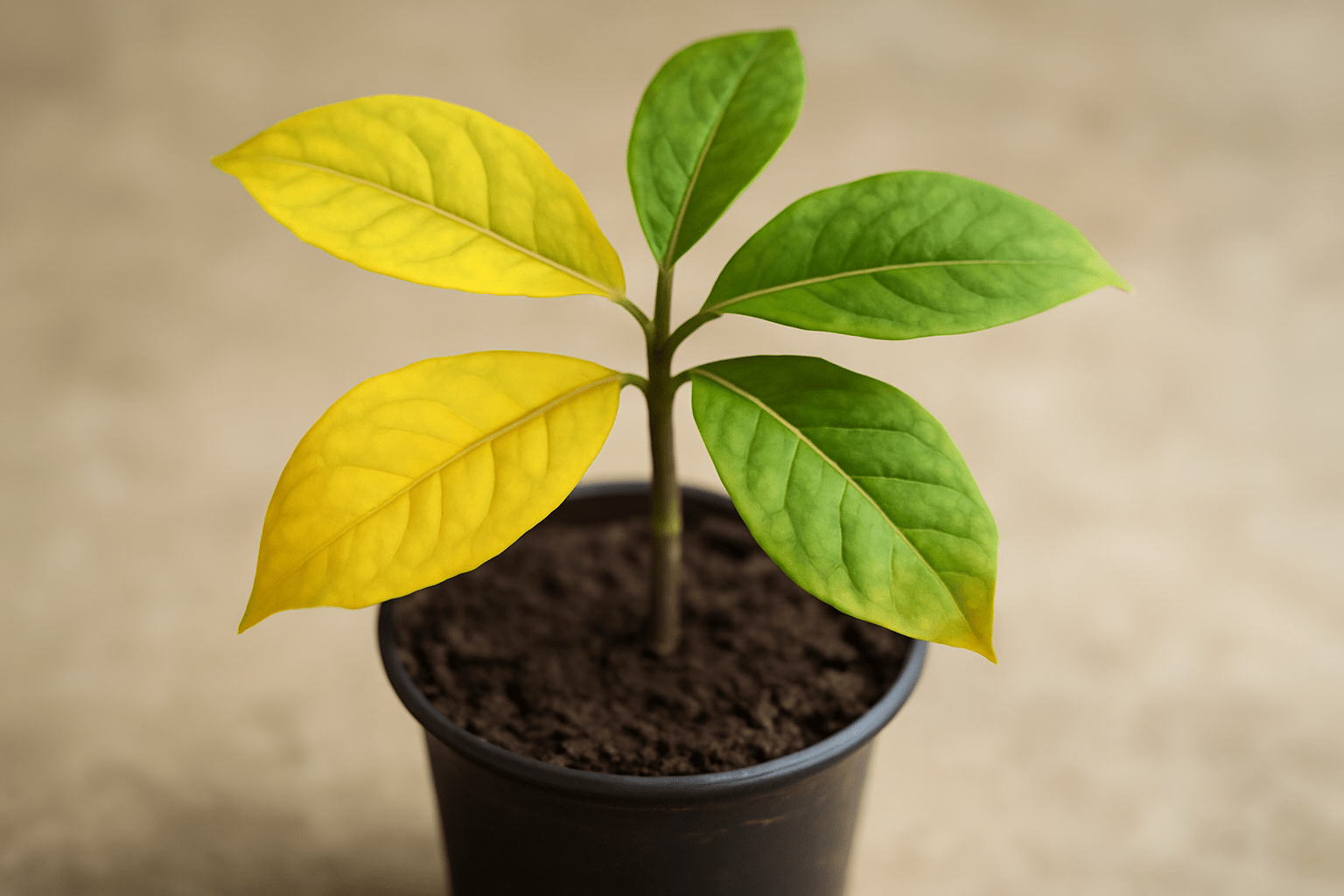
🟢 Problem 3: Stunted Growth 🌱
If your magnolia tree is growing more slowly than expected, there could be several reasons for it. Here’s how to speed up the process:
Solution:
- Soil Quality: Magnolias prefer rich, slightly acidic soil. Check the pH and make sure your soil has good organic matter. If it’s too heavy or compacted, consider repotting your seedlings in lighter, well-draining soil. 🌱
- Light and Temperature: Make sure your magnolia is getting enough sunlight (6-8 hours per day). Keep the seedlings in a warm spot but avoid harsh direct sunlight, which could scorch them. 🌞
- Spacing: If you’re growing your magnolia in a crowded space, they may be competing for nutrients. Ensure they have enough room to grow—if they’re in containers, consider moving them to larger pots. 🌿
🔴 Problem 4: Pest Infestation 🐜
Magnolia seedlings, like most young plants, are susceptible to pests such as aphids, slugs, and snails. Here’s what to do if you notice unwanted visitors:
Solution:
- Natural Pest Control: Spray a mixture of water and mild dish soap on the affected areas to get rid of aphids. For slugs and snails, place beer traps around the seedlings or sprinkle diatomaceous earth around the base to deter them. 🍻
- Check the Leaves: If you notice small, distorted leaves or a sticky residue, aphids are likely the culprit. Remove the affected leaves and use an organic insecticide if needed. 🌿
- Proper Care: Keep your magnolia seedlings healthy with proper watering and fertilizing—strong plants are less likely to fall victim to pests. 🪴
🟣 Problem 5: Root Rot 🪱
Root rot is a serious issue that can occur if your magnolia seedlings are overwatered or planted in poorly-draining soil. It’s crucial to catch this early to save your seedlings.
Solution:
- Check the Roots: If your seedlings are wilting and the soil is soggy, gently remove them from the pot to inspect the roots. Healthy roots should be white and firm. If the roots are mushy or brown, you’re dealing with root rot. 🚨
- Repot: Trim off any rotting roots, and replant the seedling in fresh, well-draining soil. Make sure the new pot has drainage holes to prevent water from collecting at the bottom. 🪴
- Watering Adjustment: Only water your magnolia when the top inch of soil feels dry to the touch. Avoid keeping the soil too wet for extended periods. 💧
🟢 Problem 6: Seedlings Becoming Leggy 🌱
If your magnolia seedlings are stretching out and looking weak, it could be a sign that they’re not getting enough light.
Solution:
- Increase Light Exposure: Move your seedlings to a brighter spot or consider using a grow light to give them more consistent light. Magnolia seedlings need a lot of bright, indirect sunlight to grow strong and healthy. 🌞
- Rotate Seedlings: If you’re growing them indoors, rotate the pots every few days to ensure that the plants grow evenly without leaning toward the light source. 🔄
💪 Final Tips for Success! 🌟
Magnolia trees may seem like they’re tricky to grow, but with a little patience and the right care, your seedlings will thrive. Don’t get discouraged if things don’t go perfectly right away. Keep monitoring them, adjust when needed, and your magnolia will reward you with stunning blooms in the years to come! 🌸
These practical solutions will help you tackle any growing problems you face with your magnolia tree seeds and turn them into healthy, flourishing trees. Happy gardening! 🌿
🌸 Final Thoughts 🌸
Growing magnolia trees from seed can be a rewarding and fulfilling experience, but it does require patience, care, and the right approach. By following the step-by-step guide on how to plant and grow magnolia tree seeds, you’re already on the right track to nurturing a stunning tree that will enhance your garden for years to come. 🌱
Remember, the journey of growing magnolias may come with a few challenges, but each step is an opportunity to learn and grow alongside your plants. Whether it’s through troubleshooting common issues, adjusting your care routine, or celebrating the first signs of growth, your efforts will eventually pay off. 🌷
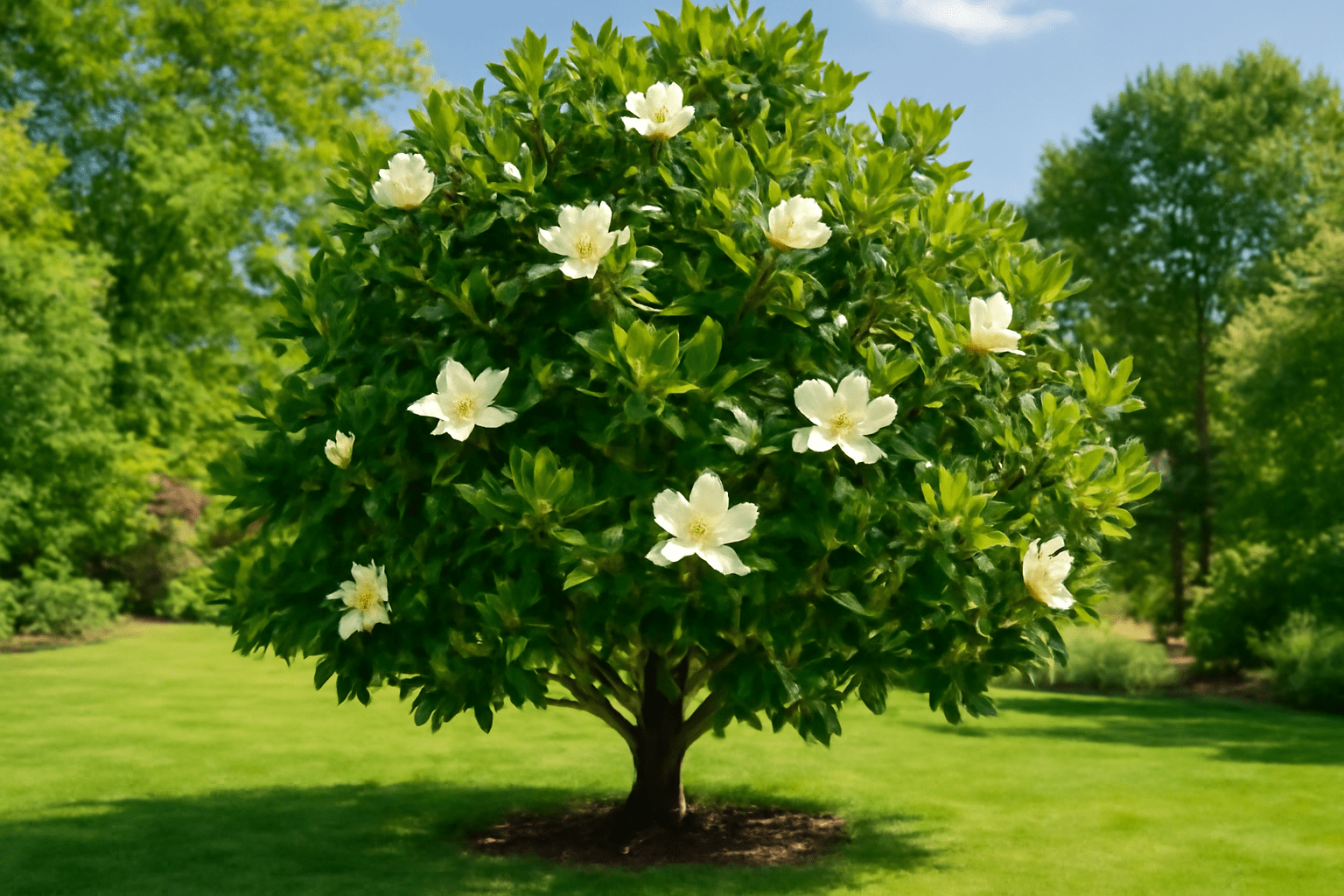
With the right knowledge, your magnolia tree seeds will thrive, bringing beauty, fragrance, and a sense of accomplishment to your outdoor space. Keep experimenting, stay patient, and soon enough, you’ll be watching your magnolia tree grow tall and strong. 🌳
If you have any questions or want to share your progress, feel free to reach out! Happy gardening and best of luck with your magnolia tree journey! 🌿✨
Frequently Asked Questions (FAQ)
How long does it take for magnolia seeds to grow into a tree?
It typically takes 5-10 years for a magnolia tree to mature fully from seed, depending on the variety and growing conditions. However, with the right care, you’ll see progress within the first couple of years, including the development of strong seedlings and their transition to small trees.
Can I grow magnolia trees from seed indoors?
Yes, you can start magnolia seeds indoors! In fact, starting them in pots indoors is a great way to control the environment, especially during the cold stratification process. Once the seedlings are strong enough, they can be transplanted outdoors in the spring or fall.
What is the best time to plant magnolia seeds?
The ideal time to plant magnolia tree seeds is either in late fall or early spring. These seasons mimic the natural conditions required for the seeds to break dormancy and start germinating, especially if you’re following the cold stratification process.
How do I break the dormancy of magnolia seeds?
To break the dormancy of magnolia seeds, you need to cold stratify them. Soak the seeds in water for 24 hours, then place them in a sealed bag or container in the fridge for 30-60 days. This cold treatment mimics winter conditions, which is essential for germination.
Why aren’t my magnolia seeds germinating?
If your magnolia seeds aren’t germinating, it could be due to improper cold stratification, incorrect planting depth, or temperature issues. Make sure to follow the stratification process correctly and plant seeds about 1/2 inch deep in well-draining soil. Additionally, ensure the seeds are kept in a cool, but not freezing, environment.
How do I care for young magnolia seedlings?
Young magnolia seedlings need consistent, gentle watering—keep the soil moist but not soggy. Place them in a bright, indirect sunlight location and use a balanced fertilizer once the seedlings are a few months old. Protect them from pests and diseases to ensure healthy growth.
Can I grow magnolia trees in pots?
Yes, magnolia trees can grow in pots, especially smaller varieties. However, they will eventually outgrow their pots as they mature. If you’re growing a magnolia in a pot, choose a dwarf variety and make sure the container has good drainage and enough space for the roots to spread.
What should I do if my magnolia seedling is wilting?
Wilting magnolia seedlings could be a sign of overwatering or underwatering. Check the soil moisture—if it’s too soggy, reduce watering and allow the soil to dry slightly between waterings. If the soil is dry, water the seedling more frequently and ensure it’s receiving enough light and nutrients.

